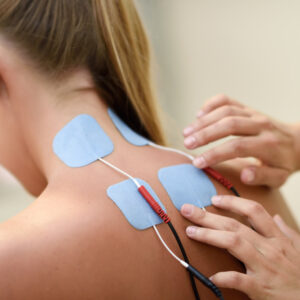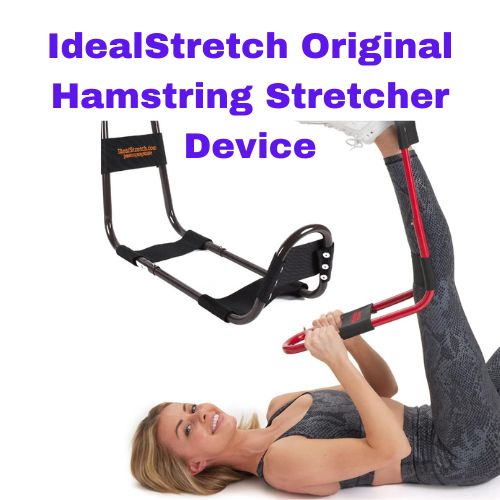Techniques of Neuromuscular Therapy is done on different body parts, wherever we have muscle pain. Normally is usually done on the pain-affected parts of our body. Neuromuscular treatment proves to help relieve pain mainly due to an imbalance of the affected muscles.

This holistic approach combines various techniques to identify and treat trigger points, restore muscle function, and promote overall well-being.
In this article, we will try to find out what techniques are used for Neuromuscular therapy, how we will get the practical benefit of this therapy, and how this therapy can help us personally.
Let’s know what is Neuromuscular Therapy..?
Neuromuscular Therapy is also called NMT. Here it is done in a traditional manual way. The main primary of this manual therapy is to heal our nervous system and musculoskeletal system.
Includes a thorough evaluation of muscle imbalances, postural deviations, and trigger points – highly irritated spots in the muscles that can cause pain and dysfunction. Using targeted techniques, Neuromuscular therapists work to release tension, restore proper muscle function, and reduce pain.
What are the principles of Neuromuscular Therapy..?
Trigger point identification
One of the very first important principles of Neuromuscular therapy is to examine the Part of our body where we have unbearable pain. Because if this is not done, then due to the spread of this pain in other muscles of our body, we may have to face more problems. It is important for a skilled therapist to identify all the painful trigger points in our body and plan further treatment. This is the main identity of a skilled therapist.
Neuromuscular Release Techniques
Techniques of Neuromuscular Therapy is release techniques are employed to address trigger points and release muscular tension. These techniques may include sustained pressure, deep tissue massage, or specific stretching maneuvers. By applying pressure to trigger points and working with the body’s natural response, therapists facilitate relaxation, increase blood flow, and promote healing.
Corrective Exercise and stretching
Neuromuscular therapy often includes corrective exercise and stretching protocols to correct postural imbalances and improve overall muscle function. Such exercises provide stability to the weak muscles of our body and gradually make us healthy. But we should do such exercises regularly so that we can get good health. Through such exercises, our contracted muscles get stretched. And that muscle simply starts working in our body.
If you agree to my advice, no matter whether you are healthy or suffering from any muscle pain, to overcome all these problems, do exercise regularly. Because we want you to live a healthy and happy life always, this is the purpose of this blog of ours. May the success of your life continue. And our happiness lies in your happiness. If you make a good exercise-boosting routine for your life, then you will not face any physical harm in the future.
Many people are using this type of Ideal Stretcher Device a lot at home. You, too, can be entitled to a healthy life by using this Ideal Original Hamstring Stretcher Device at home.
Advantages of NeuromuscularTherapy
In some muscle pain, we have to tolerate such unbearable pain that we do not even understand what treatment we have to do for it. In such a situation, we have to go to a good therapist because our problems have increased beyond limits. In such a situation, we get a lot of benefits from Neuromuscular Therapy. The continuous manual method gives long-term benefits.
Pain Relief and Management
Neuromuscular Therapy targets the source of pain by releasing trigger points and reducing muscular tension. With this therapy, you may have any kind of back pain, or any kind of neck pain, or headache, and you will get relief. This is a guaranteed cure. Providing your therapist is very important to be good. You will have to pay special attention to this. Before selecting a therapist, you must do your research at your location, wherever you live, to find out what the rating of that particular therapist is.
Improved Range of Motion
By addressing muscular imbalances and promoting proper alignment, Techniques of Neuromuscular Therapy helps enhance flexibility and range of motion. This can be particularly beneficial for athletes and individuals recovering from injuries. Whenever there is an imbalance in any of your muscles, due to this, your muscles get stiff in such a way that they have to align first. Due to the problem of the muscles, the performance of that particular muscle decreases. In this case, the flexibility in that muscle is increased by the use of Neuromuscular Therapy.

Enhance Posture Alignment
We suffer from many types of bad habits in our life, such as not sleeping properly, our habit of sitting, never standing properly by balancing on both legs and standing on one leg for a long time. Office sitting and spending a lot of time on a laptop or mobile, because of all this or due to any accident, our body’s posture gets spoiled.
Neuromuscular therapy is a good option for all these human weaknesses. Neuromuscular therapy is the only and only option to align our human-unaligned structure. After surgery of a major accident, the work of Correcting body posture in Neuromuscular therapy happens.
Stress-free living and relaxation

Techniques of Neuromuscular Therapy promotes relaxation by reducing muscular tension and calming the nervous system. It can help Reduce stress and promote a sense of Deep Relaxation and well-being. To stress-free our lives, to Encourage a sense of well-being for others, and for peace. If we get the right advice and good treatment, then we get out of any disease and move forward towards peace, happiness, and profit, whatever problem we are facing. We understand your feelings. And hope you stay healthy forever and ever.towards peace, happiness, and profit, whatever problem we are facing. We understand your feelings. And hope you stay healthy forever and ever.
Neuromuscular Therapy and Commonly Used Techniques.
In this era, different types of techniques are used in Neuromuscular Therapy, and we are telling some of them below.

Myofascial Release
This Techniques involves applying gentle pressure to the fascia, the connective tissue that surrounds and supports muscles. Myofascial release helps release restrictions and restore optimal muscle function.
Soft Tissue Manipulation
Soft tissue manipulation Techniques involve specific movements applied to the soft tissues, such as muscles. These techniques help in increasing the flow of blood in the muscles of the human being. And it also helps in reducing the excess pressure in the muscles.
Ischemic Compression
Ischemic compression involves applying sustained pressure to trigger points to facilitate their release. This technique helps relax the affected muscles and alleviate pain.
Relaxation (Post-Isometric)
Post-isometric relaxation involves a series of stretching movements performed after an isometric contraction. This technique helps release tension in muscles and improve Resilience.
Strengthening and Stretching Exercises
Neuromuscular therapy often includes stretching and strengthening exercises adapted to the individual’s needs. These exercises help improve muscle balance, Resilience, and strength.
Techniques of Neuromuscular Therapy Can Help Various Conditions, how..?
Neuromuscular Therapy can be beneficial in managing and Reducingvarious conditions, including Shoulder and Neck Pain:
Neuromuscular Therapy is always helpful in balancing each muscle and also reduces stress. We have pain in the shoulder or neck. The main reason for this is also stress, in some examples.
Back Pain
First of all, the variance that remains in the muscles has to be removed. Later, after straightening the spine, Neuromuscular Therapy is provided to the patient through trigger points. In this way, we get relief from incurable awful back pain.

Headaches and Migraines
Neuromuscular therapy techniques can help reduce strain and reduce the repetition and strength of these parts.Pain and strain in the muscles are the Main Reason for migration. By treating such a possible situation before it occurs, you can avoid the problems that come with recovery.
Apart from neuromuscular therapy, there are other therapeutic techniques available, but this is an easily performed existing technique. It is the only treatment that works well for headaches and migraine. By targeting the intricate relationship between the neuromuscular system and pain patterns, this therapy aims to release tension and restore balance in the affected muscles and nerves. Through precise techniques, such as trigger point release and myofascial manipulation, neuromuscular therapy addresses underlying muscular imbalances, postural issues, and restricted blood flow that can contribute to headache and migraine symptoms. This therapy is very effective in Reducing mental stress. The main reason for this is that it first of all reduces muscle tension. And as soon as muscle tension reduces, the victim starts feeling healthy.
Sports Injuries
In the field of competition, players get injured many times during the game; even if they are players, it is inevitable to get hurt.
But sometimes, due to the extra injuries inside the muscles of some Parts of the body, they are kept out of the game for a long time. Now in those days, they are kept under the observation of a specialist therapist. Muscular therapy is very helpful to players during pain.

What are Repetitive strain Injuries?
Repetitive strain injuries, such as carpal tunnel syndrome or tennis elbow, can benefit from neuromuscular therapy. By addressing the underlying muscular imbalances, this therapy can aid in pain relief and support rehabilitation.
The Techniques of Neuromuscular Therapy in Rehabilitation and Injury Prevention
Neuromuscular Therapy plays a main role in rehabilitation by directing muscular differences, promoting healing, and preventing further injuries. It can be an inner part of an extensive rehabilitation program, enhancing recovery and restoring optimal function.
Choose a Qualified Neuromuscular Therapist
Facility and Certifications
Look for therapists who have completed recognized training programs and hold relevant certifications in Neuromuscular Therapy.
Experience / Expertise
Inquire about the therapist’s experience in treating conditions similar to yours. Ask for references.
Communication and Listening Skills
A skilled therapist should have excellent communication skills and be attentive to your specific needs and concerns.
Professionalism and Ethical Practices
Ensure that the therapist adheres to professional ethics and maintains a safe and comfortable treatment environment.
Client-Centered Approach
Choose a therapist who takes a holistic approach to your care, considering your individual goals, preferences, and overall well-being.
Let’s Dive in the Conclusion,
In conclusion, Techniques of Neuromuscular Therapy presents a diverse line-up of techniques aimed at rectifying muscular imbalances, relieving discomfort, and promoting all-inclusive wellness.
By comprehending the underlying principles and advantages of this therapeutic approach, individuals are empowered to make educated choices regarding its integration into their healthcare regimens.
Whether individuals seek respite from persistent pain, rehabilitation from an injury, or endeavors to enhance athletic prowess, neuromuscular therapy emerges as an invaluable resource, offering a repertoire of effective methods for the optimization and maintenance of muscular functionality.
FAQs
Q: Is Neuromuscular Therapy painful?
A: Techniques of Neuromuscular Therapy can involve some discomfort during the treatment, particularly when addressing trigger points. However, therapists work within each individual’s comfort level to ensure a beneficial and manageable experience.
Q: How many sessions of Neuromuscular Therapy are typically needed?
A: The Number of sessions required depends on various factors, including the individual’s condition, the severity of symptoms, and treatment goals. Your therapist can provide a personalized treatment plan with a recommended frequency of sessions.
Q: Can neuromuscular therapy help with postural issues?
A: Yes, Neuromuscular Therapy can be effective in addressing postural imbalances by targeting the underlying muscular imbalances and promoting improved alignment.
Q: Can anyone receive neuromuscular therapy?
A: Neuromuscular Therapy is generally safe for most individuals. However, it is required to inform your therapist about any pre-existing medical conditions or concerns to ensure safe and effective treatment.
Read More : How to Overcome Anxiety and Live a Stress-Free Life: 10 Stsecre





Add a Comment